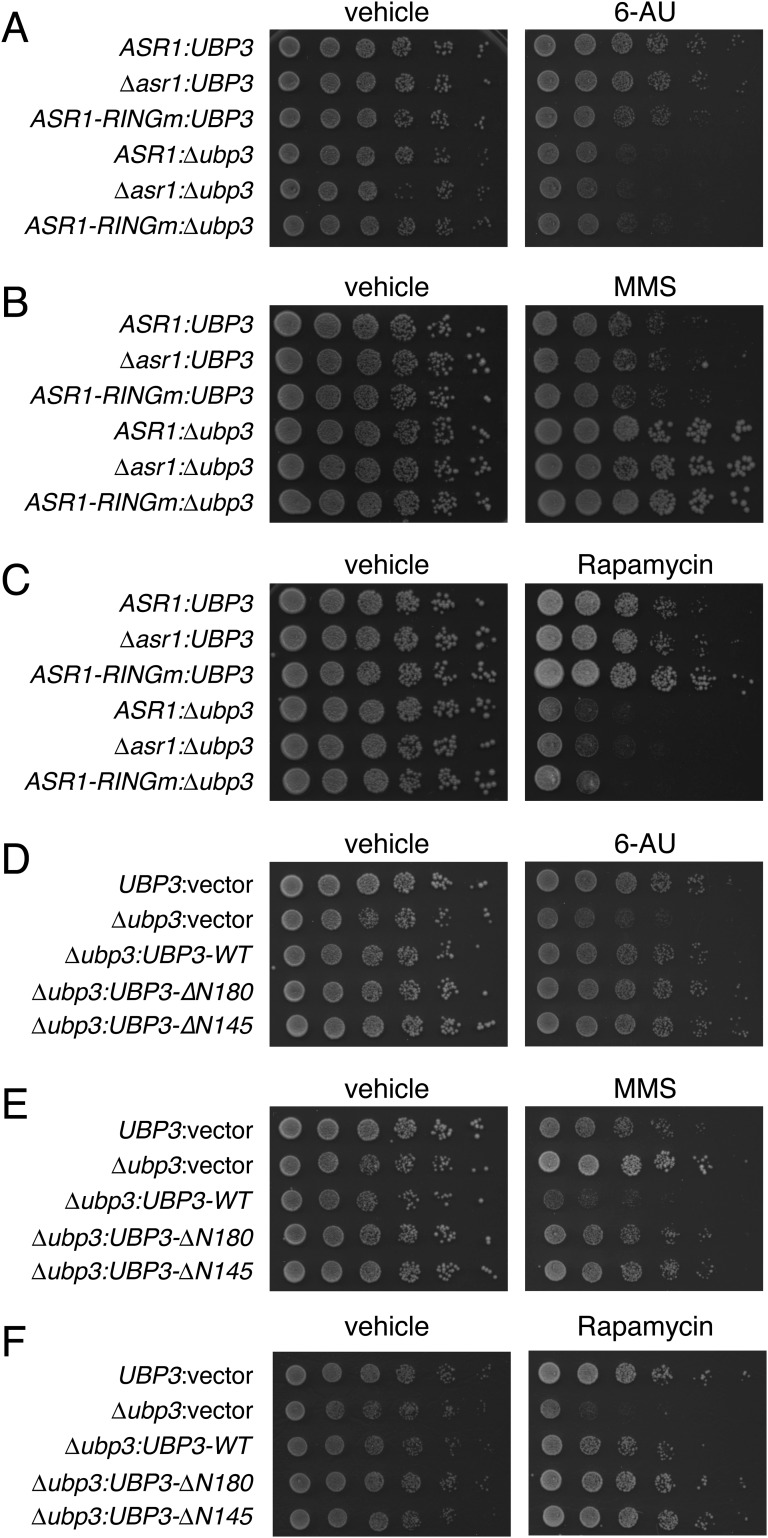Fig. S3.
Lack of genetic interaction between ASR1 and UBP3 in modulating sensitivity to chemical agents. (A–C) Analysis of interactions between ∆ubp3 and the ASR1 null or RING finger mutations. Fivefold serial dilutions of the indicated yeast strains (ASR1:UBP3, BY4741; ∆asr1:UBP3, YTM5; ASR1-RINGm:UBP3, YTM27; ASR1:∆ubp3, ∆Ubp3; ∆asr1:∆ubp3, YTM6; ASR1-RINGm:∆ubp3, YTM28) were spotted on plates containing (A) 150 μg/mL 6-AU, (B) 0.03% MMS, or (C) 5 nM Rapamycin, or relevant vehicle control, and grown for 2–3 d before being photographed. (D–F) Analysis of the impact of mutations in Ubp3 that disrupt interaction with Asr1. Fivefold serial dilutions of the indicated yeast strains (UBP3:vector, YTM44; ∆ubp3:vector, YTM45; ∆ubp3:UBP3-WT, YTM46; ∆ubp3:UBP3-∆N180, YTM47; ∆ubp3:UBP3-∆N145, YTM48) were spotted on plates containing (D) 100 μg/mL 6-AU, (E) 0.02% MMS, or (F) 1 nM Rapamycin, or relevant vehicle control, and grown for 2–3 d before being photographed. See Table S2 for strain details.

